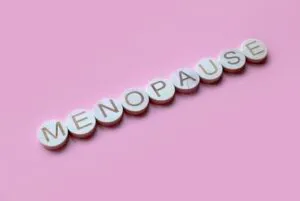 When you go in for a routine physical, your doctor might ask about your social habits, including smoking and drinking. Throwing back a few beers with your friends on the weekend might not sound like a big deal, but a regular pattern of moderate to heavy drinking can negatively impact your overall health, especially if you have specific medical conditions. Unless you have a history of certain diseases or alcoholism, there’s no reason to abstain from alcohol altogether. However, there are ways to mitigate your risks while drinking.
When you go in for a routine physical, your doctor might ask about your social habits, including smoking and drinking. Throwing back a few beers with your friends on the weekend might not sound like a big deal, but a regular pattern of moderate to heavy drinking can negatively impact your overall health, especially if you have specific medical conditions. Unless you have a history of certain diseases or alcoholism, there’s no reason to abstain from alcohol altogether. However, there are ways to mitigate your risks while drinking.
What Is Low-risk Drinking?
Most people engage in “low-risk” drinking. The National Institute on Alcohol Abuse and Alcoholism defines low-risk drinking as follows:
- Four drinks in a single day or 14 drinks total for the week for men
- Three drinks in a single day or seven drinks total for the week for women
Men and women process alcohol differently because men have more water in their body, pound for pound, than women. On average, men also tend to weigh more. The NIAAA notes that low-risk drinking is not necessarily “no-risk drinking,” meaning that any amount of alcohol can cause problems.
How often you have a heavy drinking day also matters. If you attend a party, for instance, and have more than a few drinks, then this is not likely to create any long-term issues. However, if you attend a party three times a week and drink too much each time, then this may signal a problem. The NIAAA estimates that about 25 percent of people who exceed the low-risk drinking limits have a problem already.
Why Should You Cut Back?
There are plenty of good reasons to stay within the low-risk zone when it comes to alcohol consumption, not least of which is a family history of alcoholism or alcohol abuse. Certain medical conditions can be made worse with alcohol, and some medications warn against using alcohol while you’re taking them. If you drive for a living, work with children, travel a lot or work on an on-call basis, then you may also benefit from limiting alcohol consumption. Women who are trying to become pregnant or those who already are should avoid alcohol altogether.
How Can You Drink in Moderation?
If you’re ready to cut back on alcohol, then here are some practical steps to take:
- Pace yourself by sipping slowly, alternating alcohol with water or another beverage, and including food in the mix.
- Avoid triggers, which are things that encourage you to drink more, such as parties with specific people.
How much alcohol is too much? The NIAAA offers a guideline on its site describing standard amounts for different types of alcoholic drinks. In the U.S., any alcoholic beverage that contains about 14 grams of pure alcohol, or 0.6 fluid ounces, is considered a “standard” drink. That equates to a 5-oz. glass of table wine, one 12-oz. can of beer, or 8- to 9-oz. of malt liquor. Know your limits, and drink responsibly to avoid crossing the low-risk line.
Sources:
https://www.rethinkingdrinking.niaaa.nih.gov/How-much-is-too-much/Is-your-drinking-pattern-risky/Whats-At-Risk-Or-Heavy-Drinking.aspx
https://www.rethinkingdrinking.niaaa.nih.gov/Thinking-about-a-change/Strategies-for-cutting-down/Tips-To-Try.aspx
https://www.rethinkingdrinking.niaaa.nih.gov/How-much-is-too-much/What-counts-as-a-drink/Whats-A-Standard-Drink.aspx





